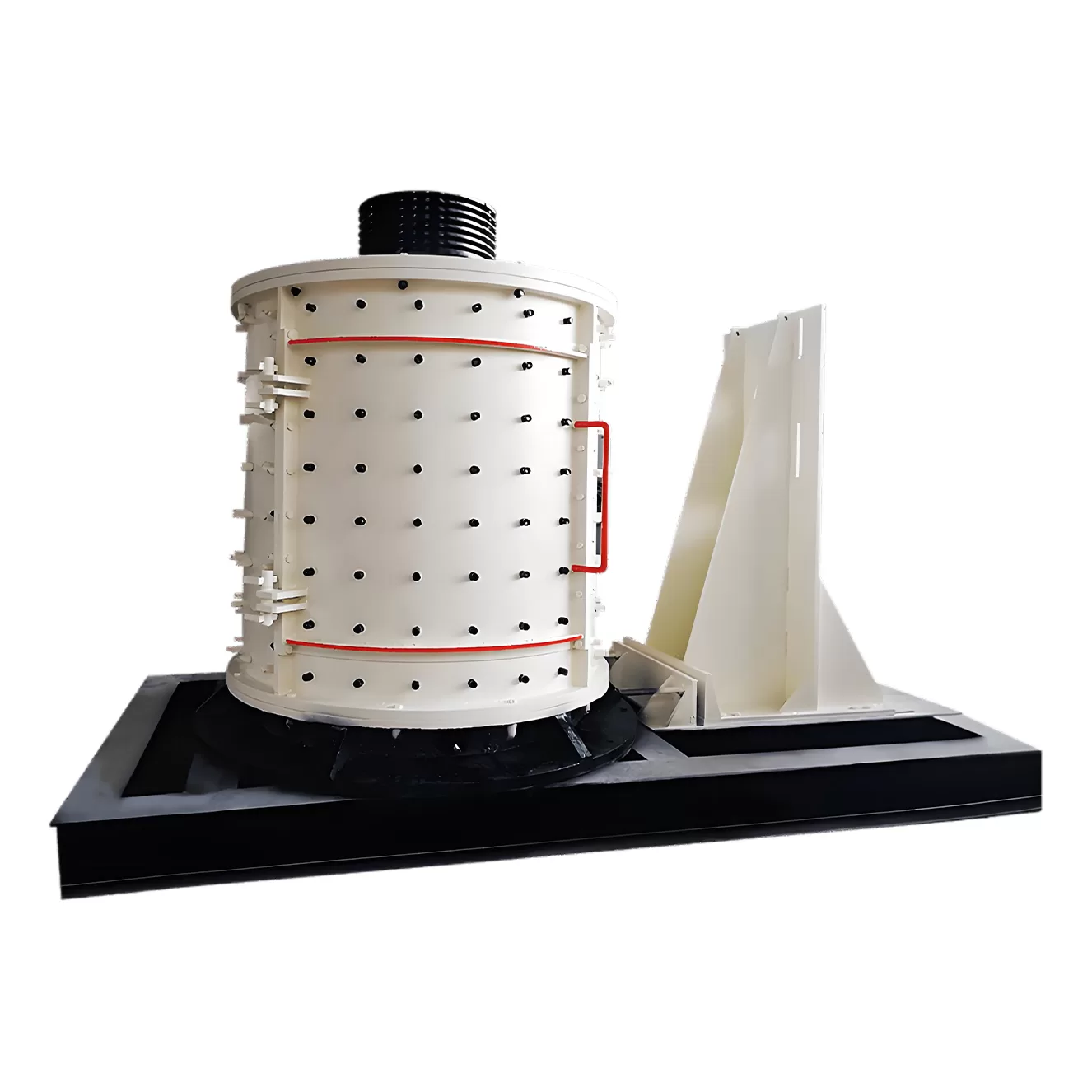全站搜索
Search the entire website
Search the entire website
Compound crusher is the newly developed equipment by combining sand making machine and the crushing principle of impact crusher.
A compound crusher, also called vertical compound sand maker, is a double-rotor primary impact crusher. The compound crusher is an ideal machine for crushing high-moisture and viscous materials, commonly used in small-scale crushing and sand production lines.
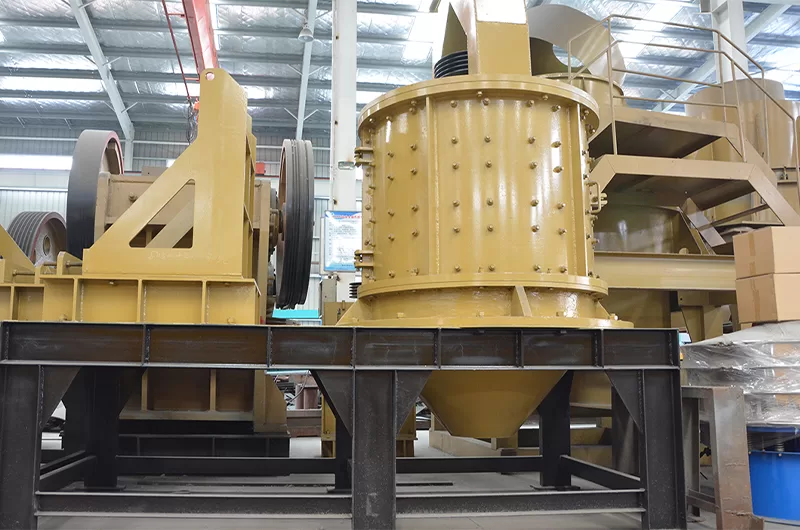
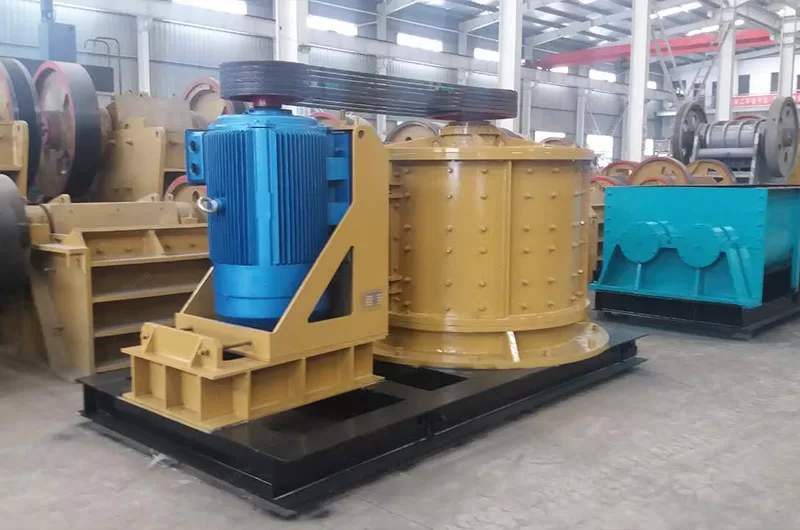
Compound Crusher is used in mining, metallurgy, construction, and coal industries, especially for the production of clinker and aggregates in small and medium-sized cement plants.
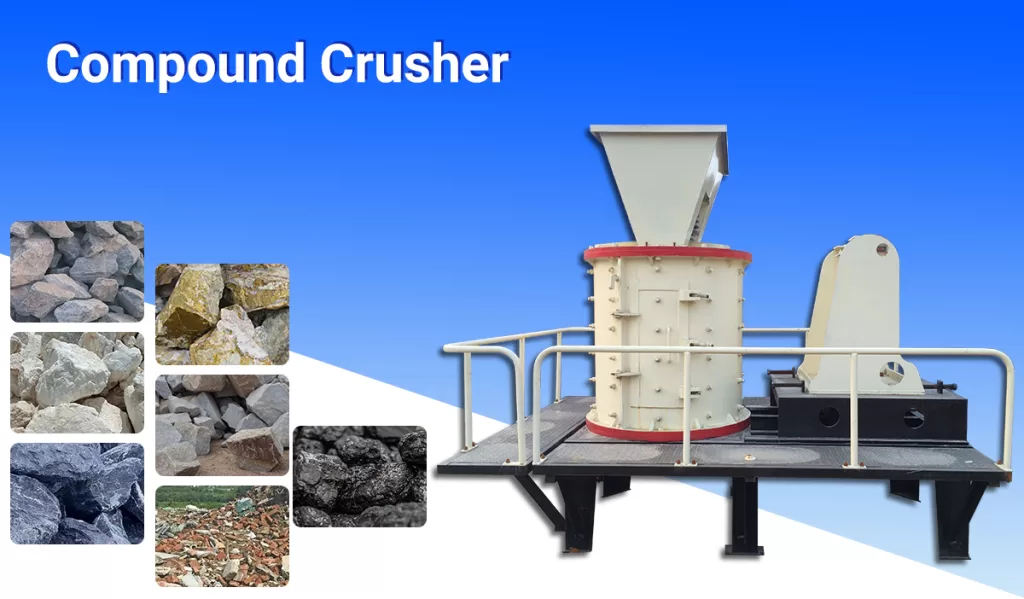
This compound cone crusher has both primary and secondary crushing functions. With large crushing ratio, compound stone crusher can refine the material of 100-240mm to small particles below 3-5mm . The gap between hammer head and impact plate can be flexibly adjusted.Designed with gridless structure, it is not easy to be clogged when dealing with materials containing a lot of slurry. Long bearing life and horizontal arrangement enables it to handle high temperature materials such as cement clinker. Low noise level of 75 decibels (dB) during operation and effective control of dust pollution. The wearing parts are made of special alloy material, which combines high hardness and toughness and multi-element alloy wear resistance, extending the service life to 2-3 times. The rear chamber is equipped with a screw or hydraulic pressure opener, which greatly facilitates the replacement of wearing parts.
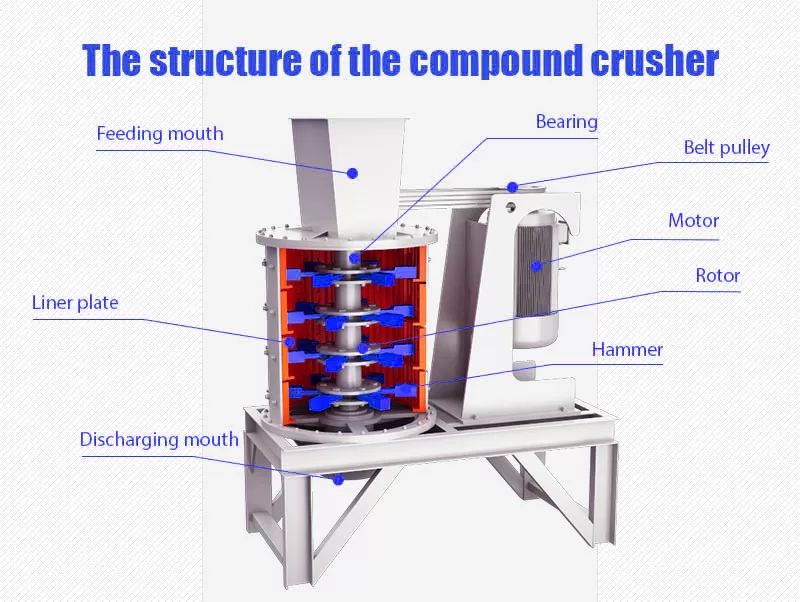
The vertical compound crusher machine is mainly composed of the crushing system (rotor, bearing, liner, hammer), transmission system (motor, pulley), in-and-out mouths, and other parts. Among them, the crushing system is the easy-wearing component, which is mainly introduced for you.
The flat hammer is a vulnerable part of the crusher, installed on the rotor. They break the material by striking it repeatedly.
The hammer head is made of wear-resistant alloy steel or bimetal thermal compound material and the weight is generally between 9-36 kg.
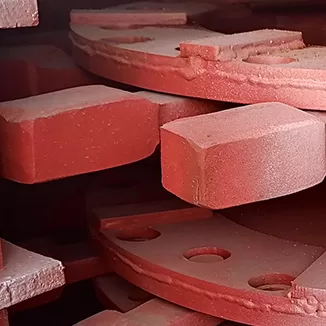
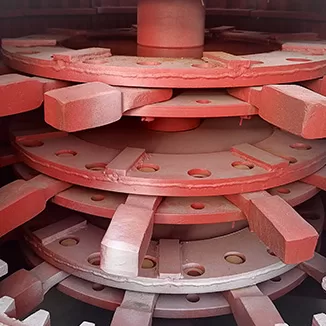
The rotor is a key part installed vertically in the crusher and is made of solid cast steel. The rotor circumference is equipped with hammers with adjustable clearance, responsible for high-speed rotation.
The rotor has a special structure that won’t be worn once crushed. The speed and rotation direction of the rotor affect the crushing efficiency.
The liner plate refers to the wear-resistant plate inside the crushing chamber, which plays the role of grinding materials and protecting the cylinder from wear.
The special casting and heat treatment process makes the liner have good impact resistance.
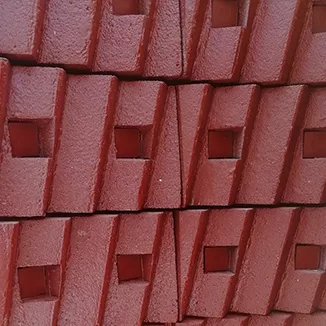
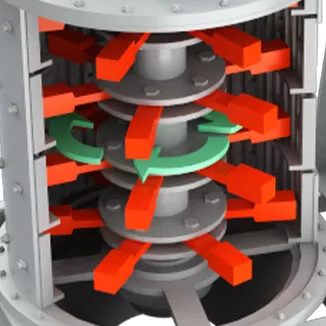
The bearing assembly supports the rotation of the rotor and is critical to the smooth operation of the crusher.
Generally, double-row radial spherical roller bearings are selected, which have strong bearing capacity and good self-aligning performance.
The material in the upper part of the machine perpendicular drops into the high speed rotating impeller,and under the high speed centrifugal force, it produces high speed impact and comminution with the other part of the material which distributes in the shape of umbrella around the impeller vertical composite crusher. The impeller and the housing will be crushed by swirl impact and friction between the impeller and the housing for many times, which will be discharged directly from the bottom, forming a closed circuit multiple cycles, and controlled by the screening equipment to achieve the required product size.
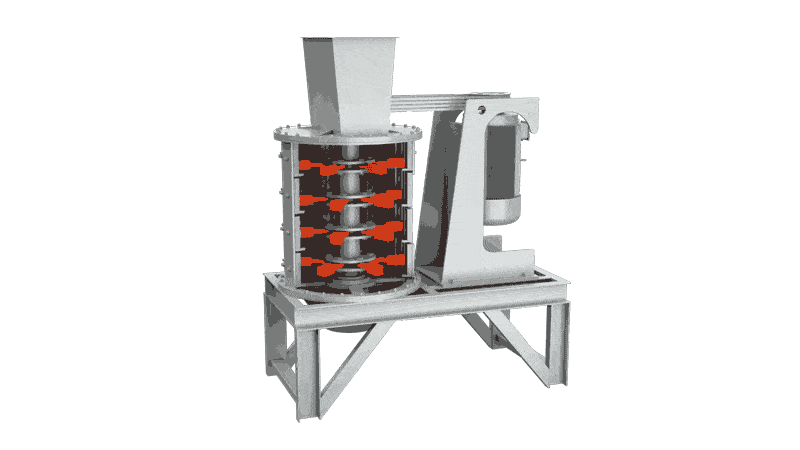
| Specification | Processing Capacity(t/h) | Motor Power(kw) |
| 800 | 5-15 | 4p 30kw |
| 1000 | 10-30 | 4p 55kw |
| 1250 | 20-60 | 6p 90kw |
| 1500 | 30-80 | 8p 110kw |
| 1750 | 40-100 | 8p 160kw |
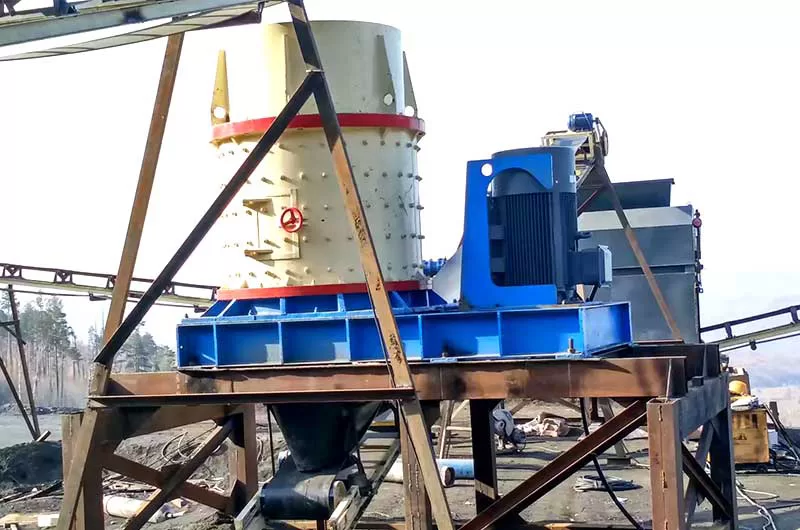
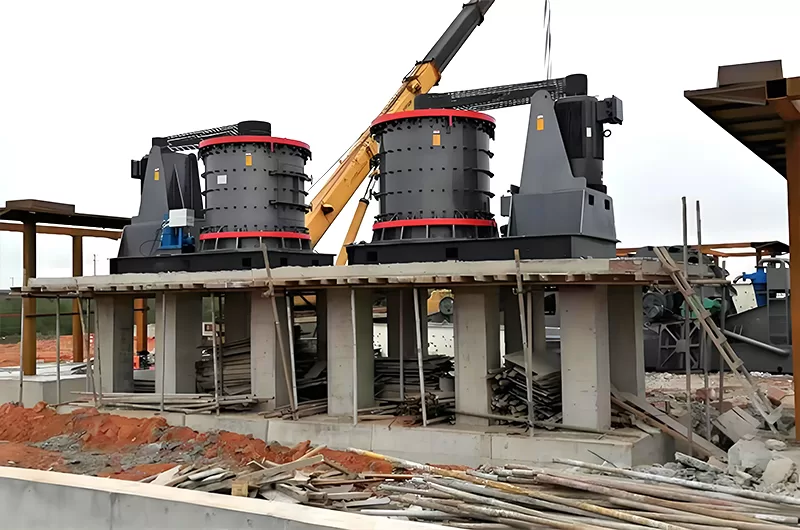
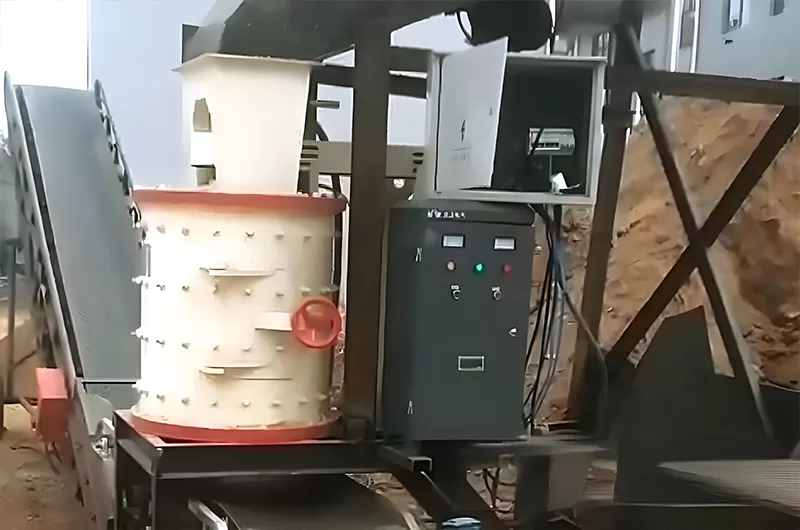
Answer: Key factors influencing separation include the table’s motion (stroke and frequency), water volume and slope, feed rate and concentration, and the feed material’s particle size and shape. Proper adjustment of these factors is critical for efficient separation. The table’s longitudinal and transverse slopes must be precisely controlled. The feed concentration should also be appropriate, typically 20-30% for coarse minerals and 15-25% for fine minerals.
Answer: Operation involves observing the bed surface and adjusting the slope, water flow, and feed rate. Regular maintenance includes checking for loose parts, lubricating moving components, inspecting for wear, and cleaning the table surface. Preventative maintenance should be performed regularly, with intervals ranging from every month to once a year.
Answer: Common issues can include table shaking or choppy cuts, uneven material distribution, or poor separation. Troubleshooting may involve checking for loose bolts, damaged springs, or misalignment, adjusting belt tension, inspecting electrical components, and ensuring proper lubrication. If there’s unusual noise, identify the source and eliminate the problem.
Answer:
Advantages: Shaking tables offer high enrichment ratios, are relatively simple to operate, and produce visible separation zones, allowing for easy adjustment and monitoring. They are suitable for a wide range of particle sizes and densities.
Disadvantages: They typically have lower throughput capacity compared to some other methods like jigs or spirals. They also require a relatively large footprint and consume a significant amount of water.
Answer: The selection depends on the material being processed, the desired throughput, and the particle size range. Factors to consider include the deck area, stroke length, and riffle design. Consulting with a manufacturer or expert is recommended to determine the optimal configuration.
